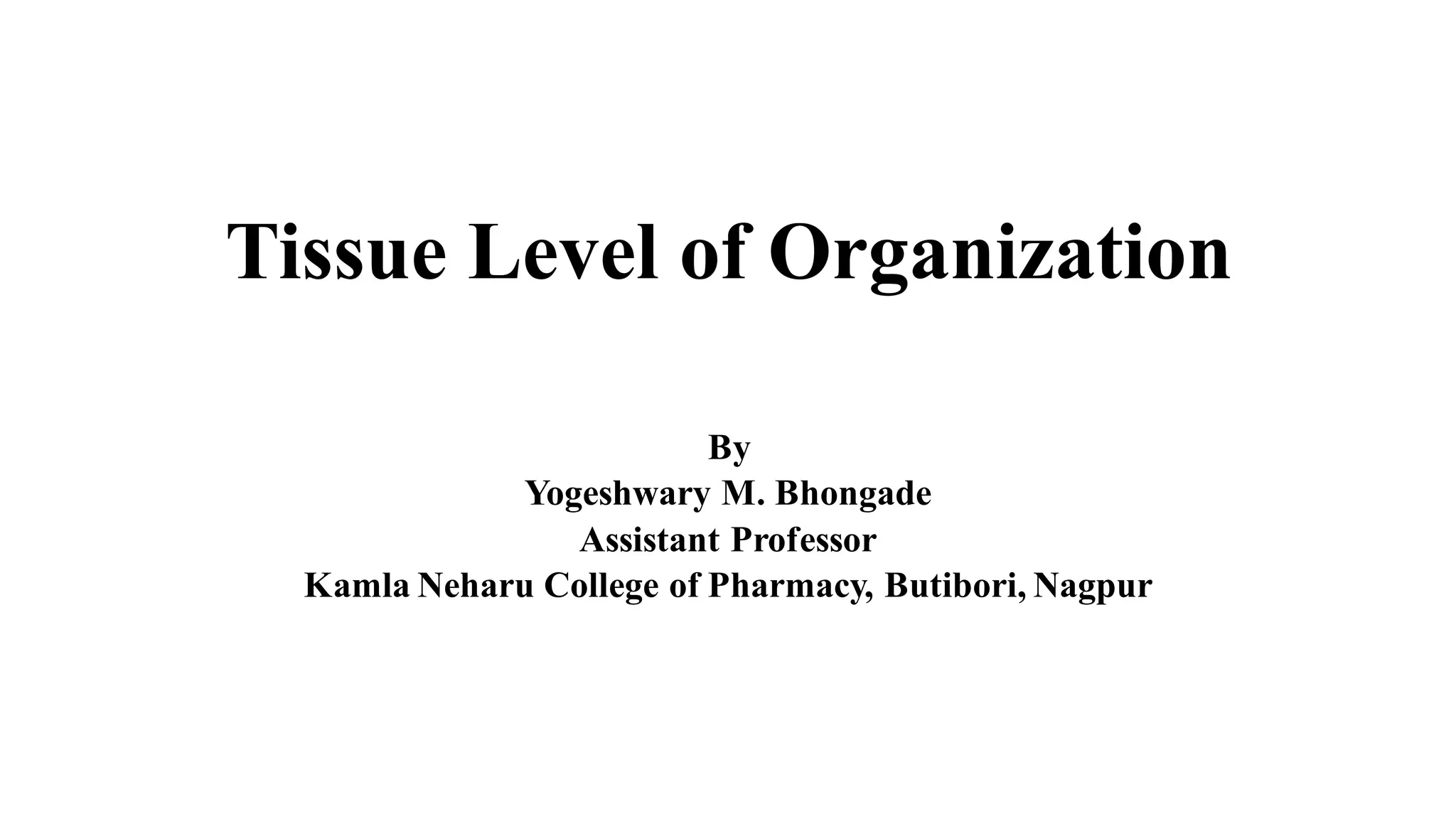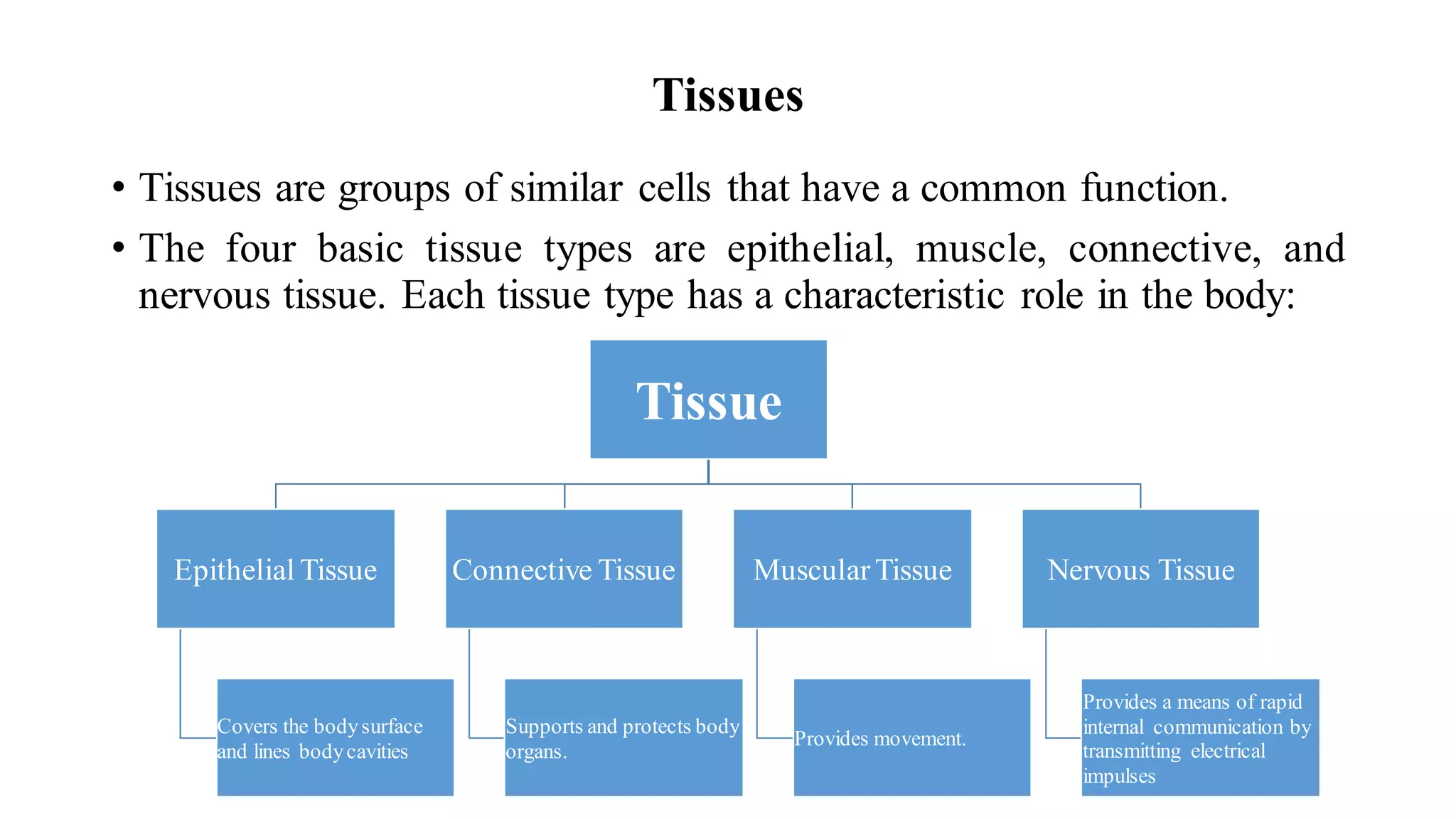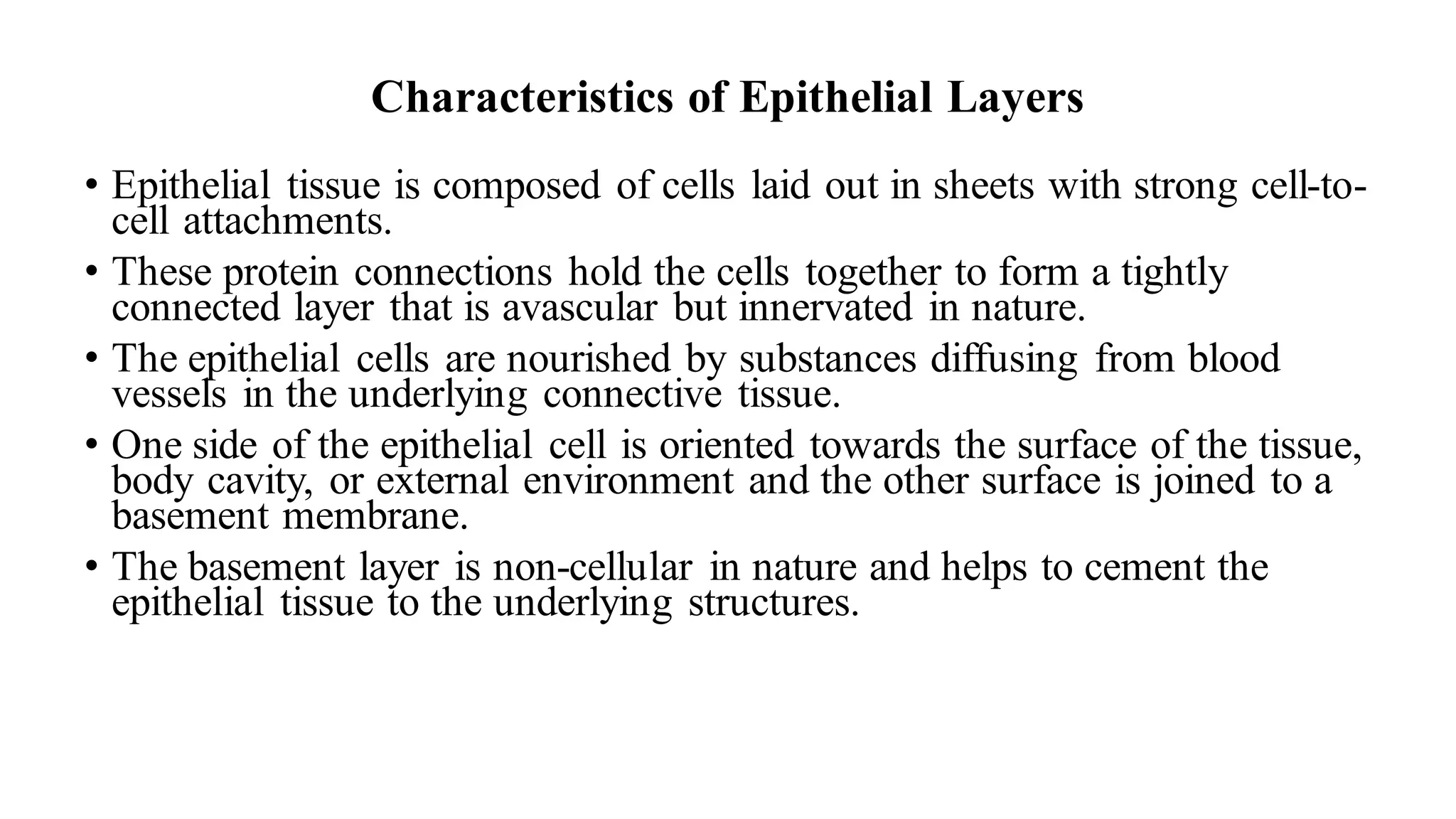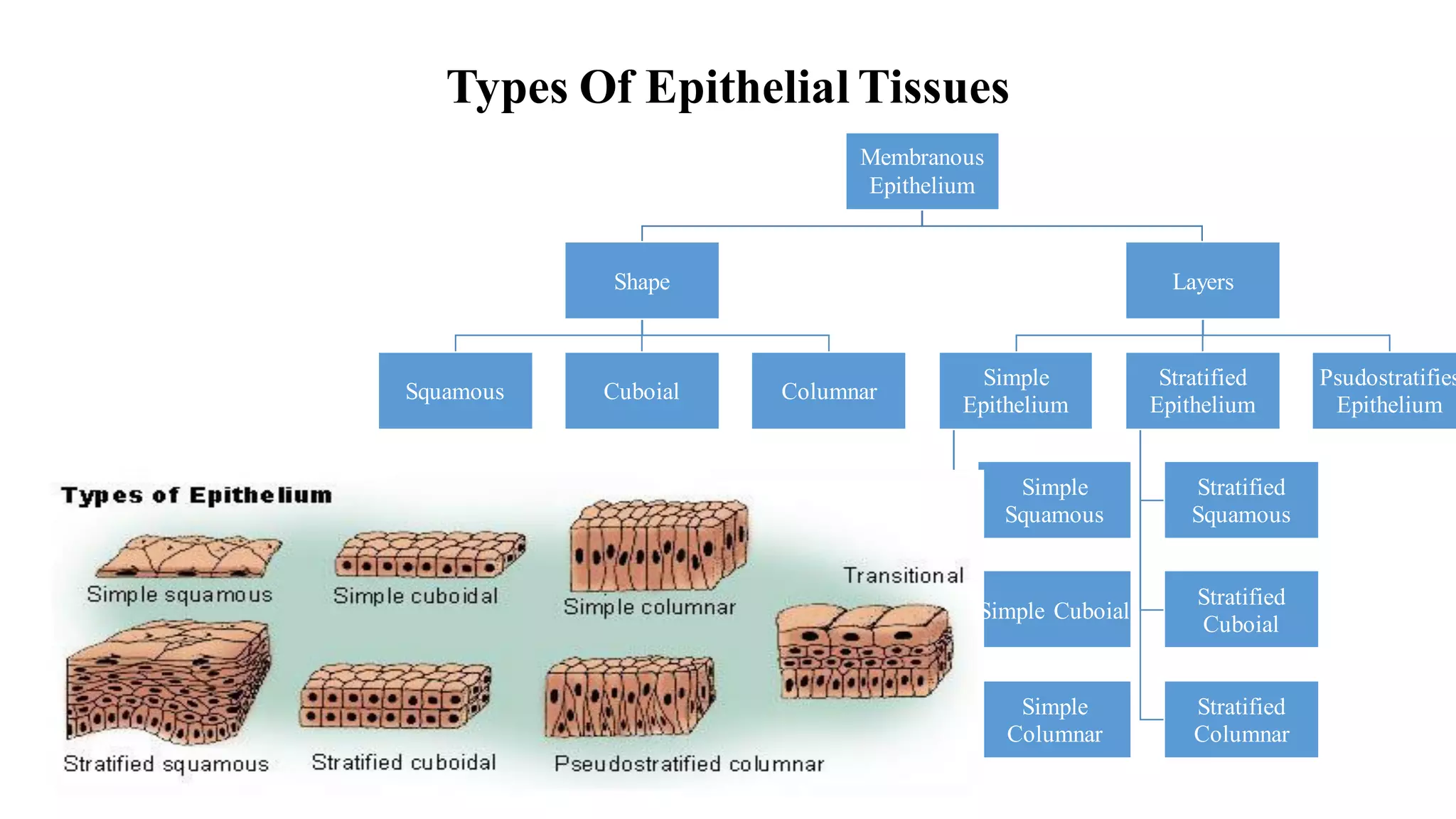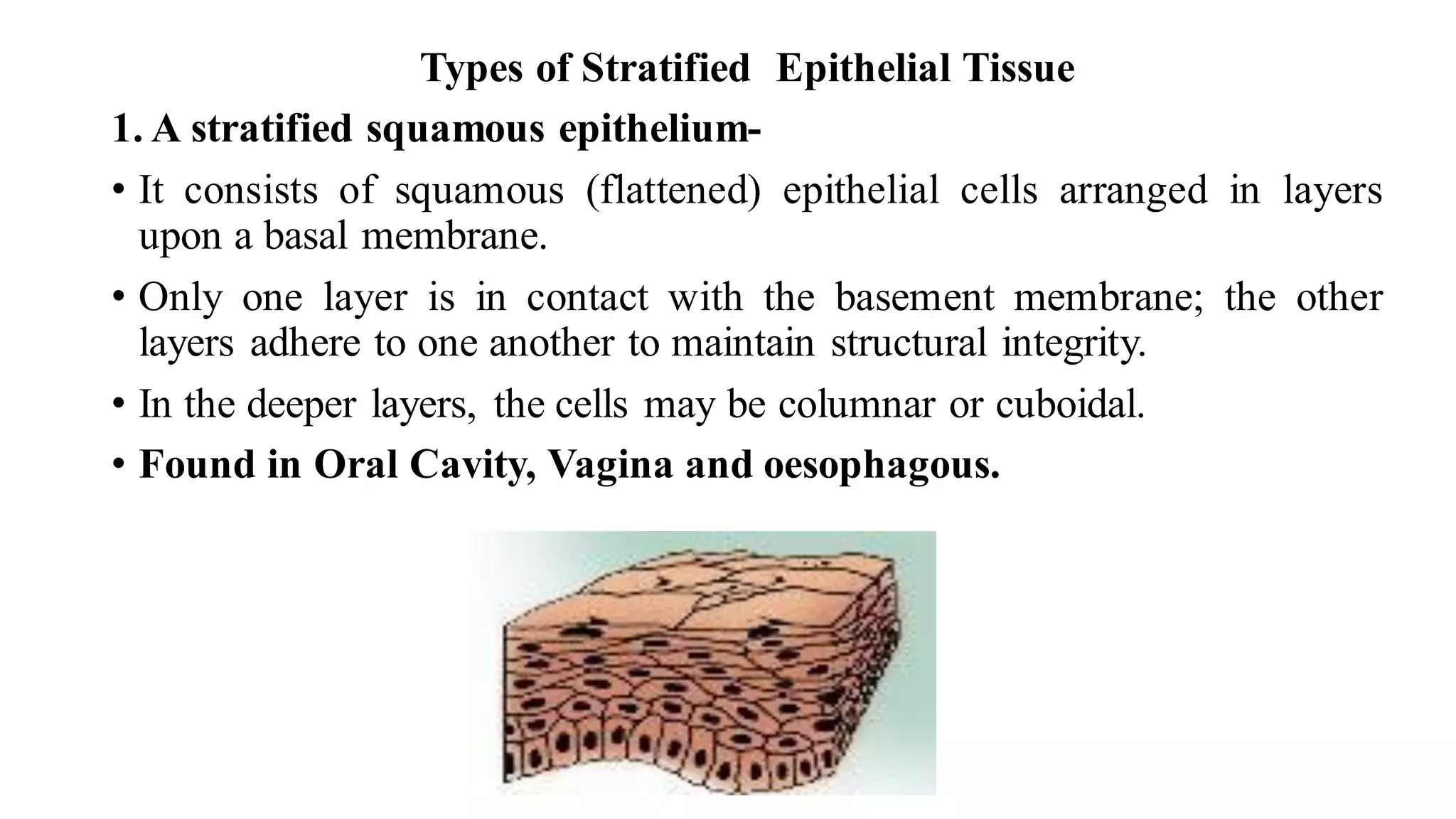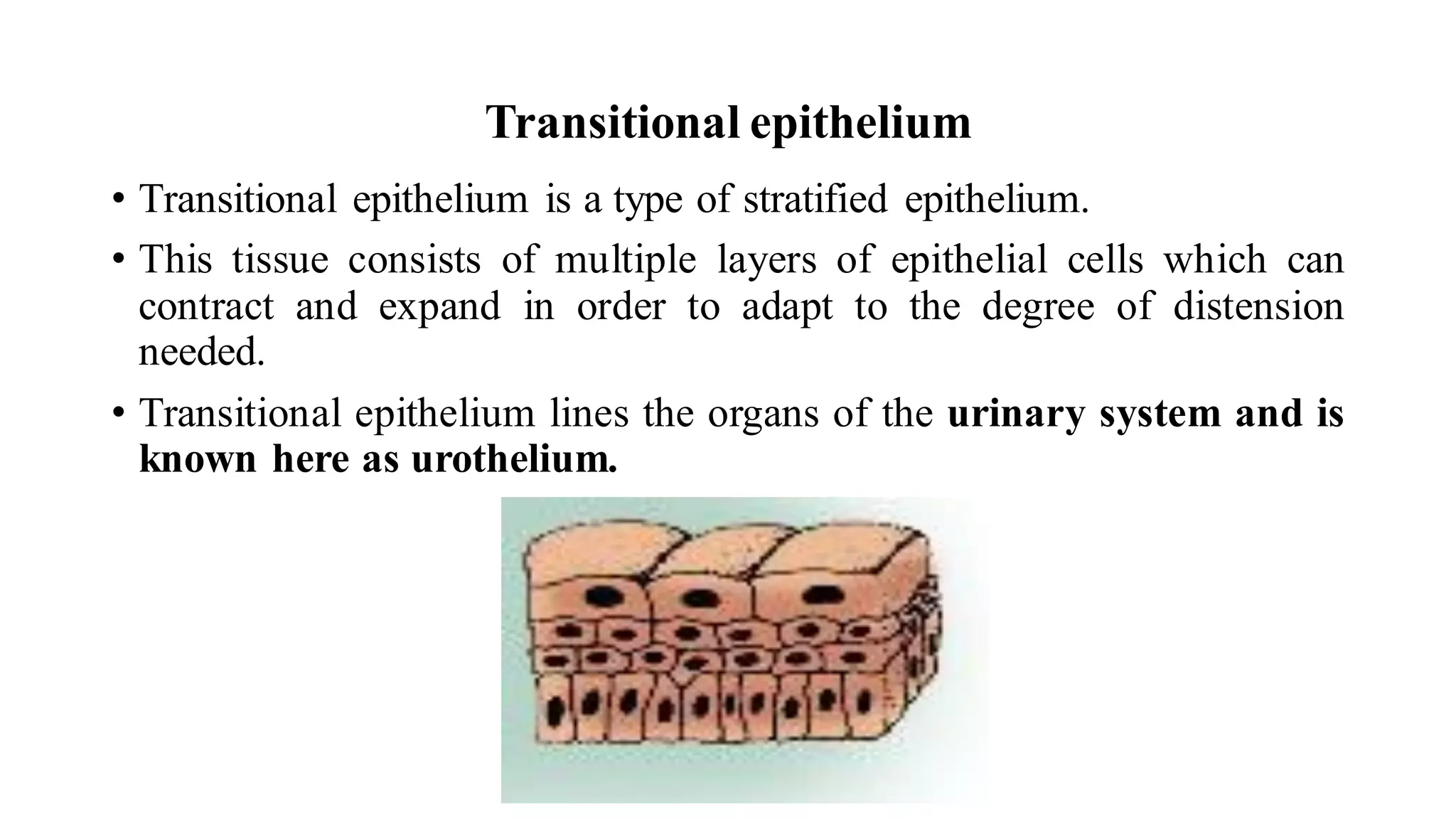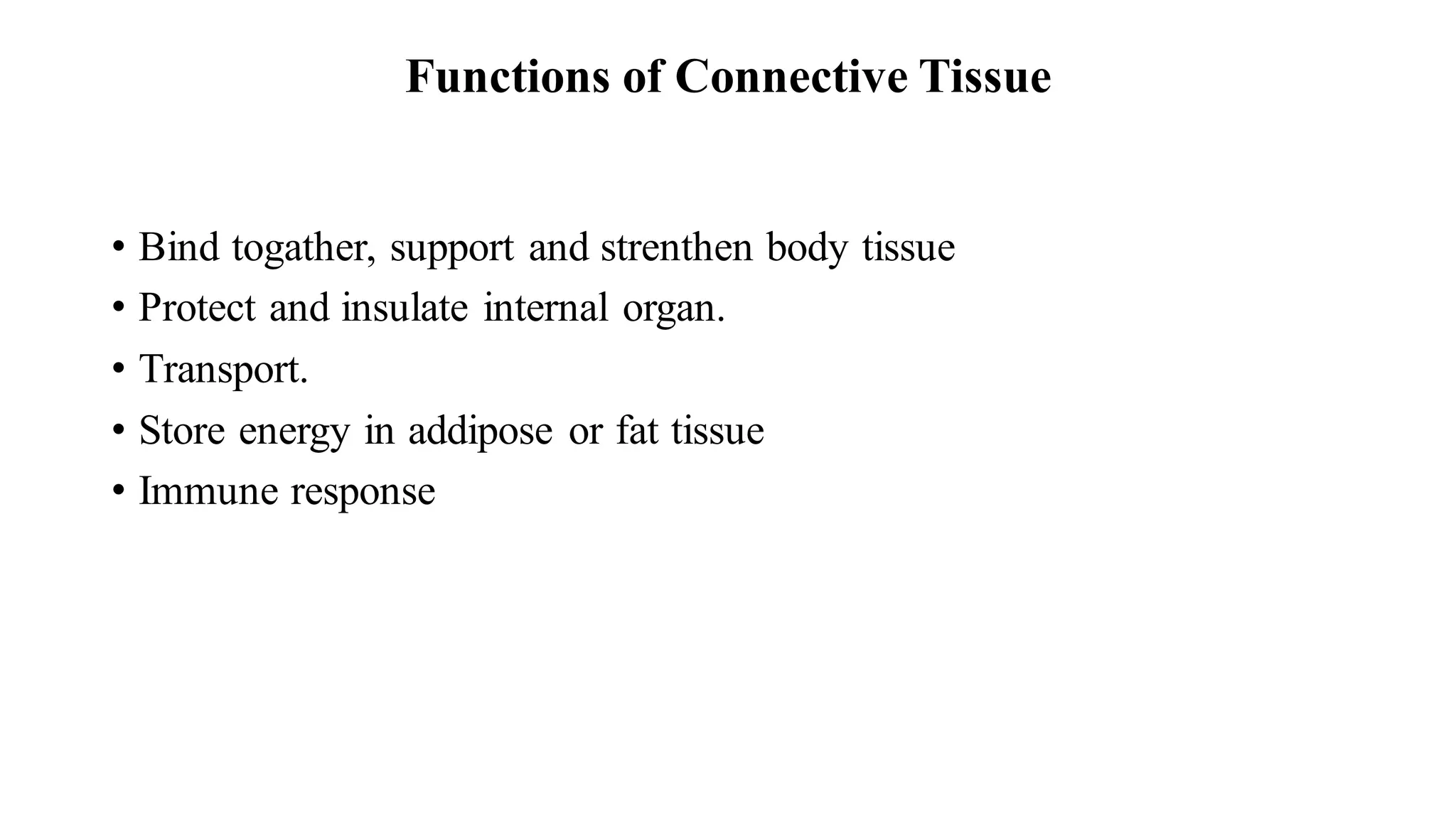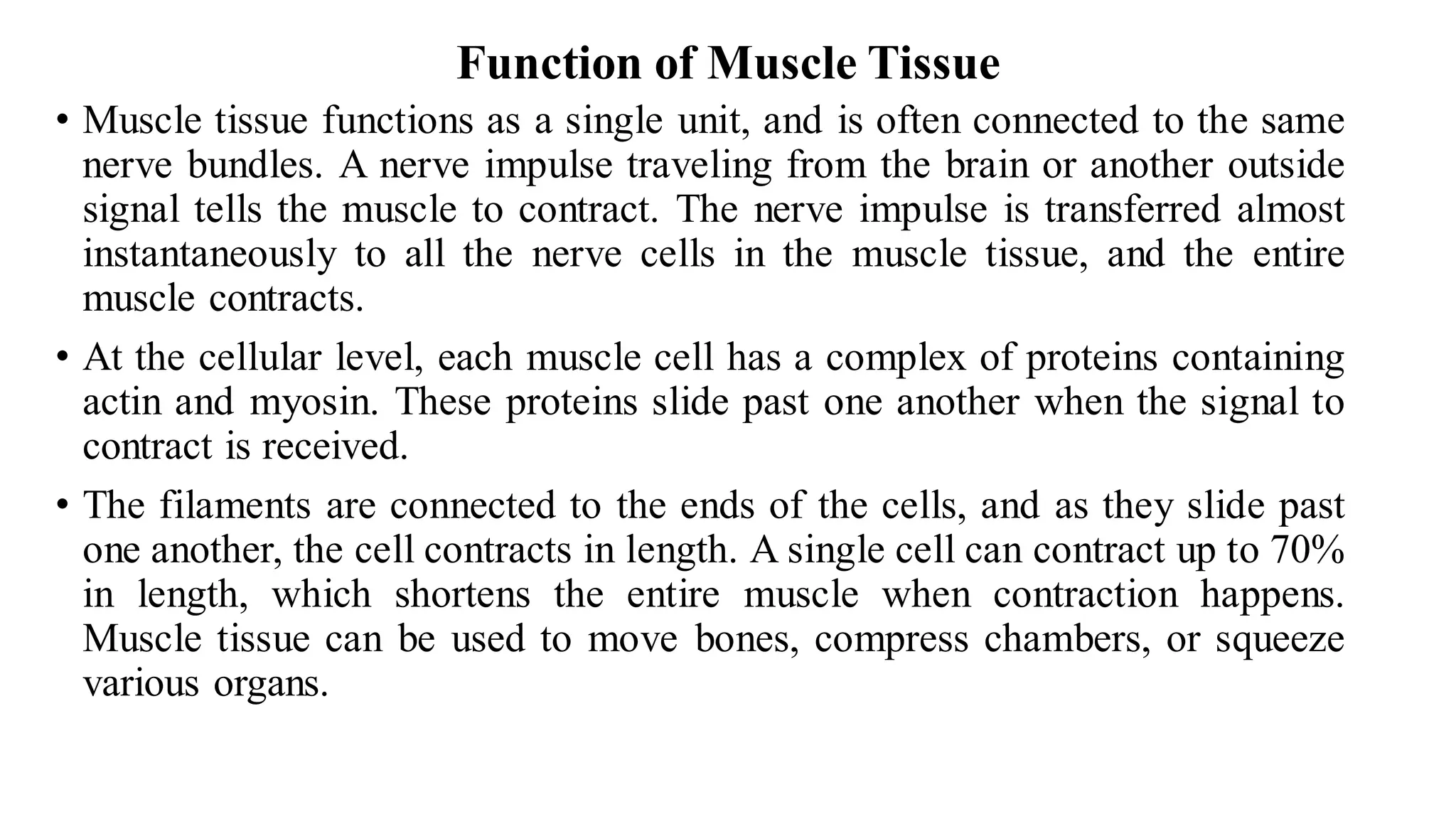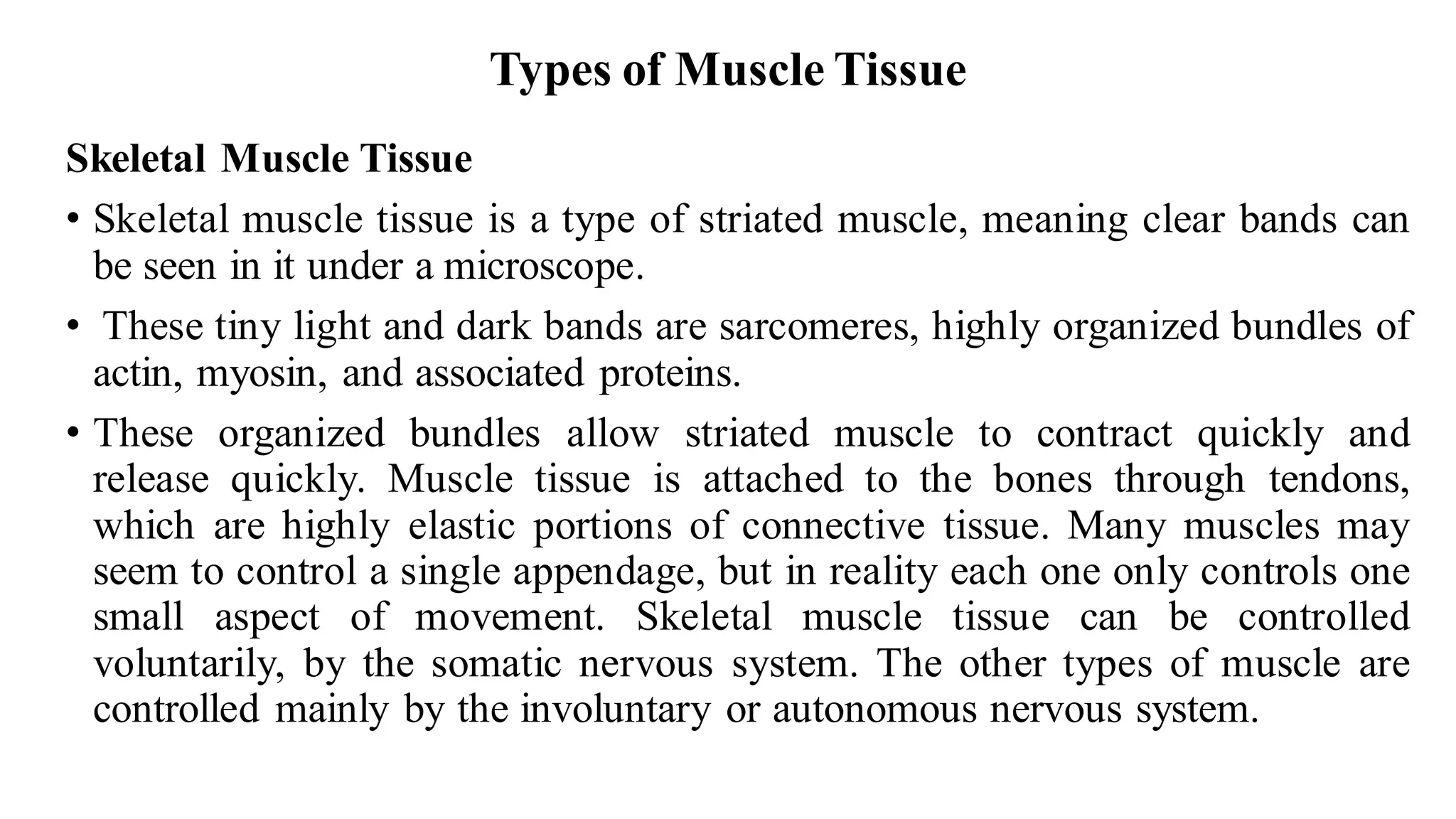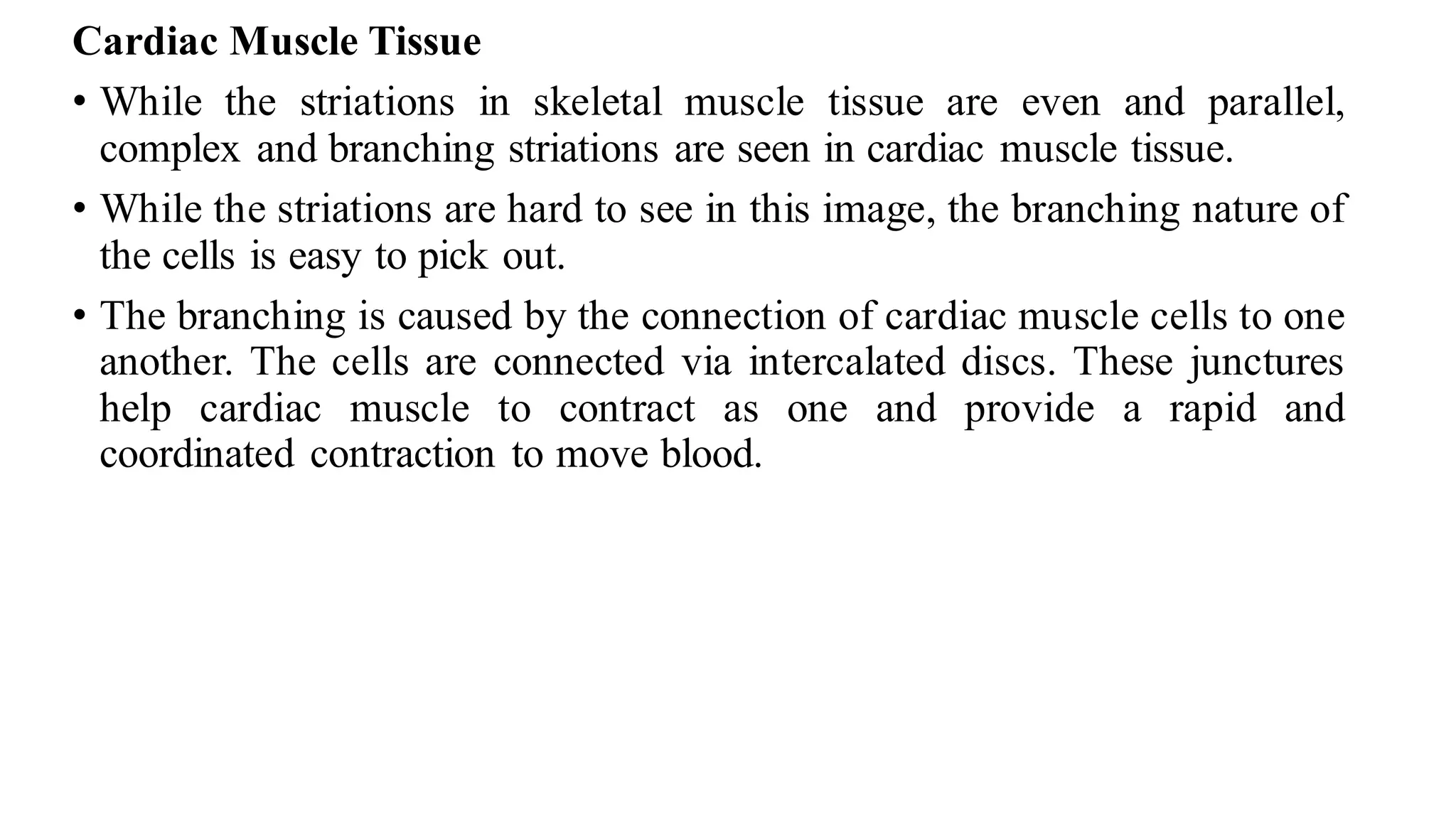This document provides information on the four basic tissue types - epithelial, connective, muscle and nervous tissue. It describes each tissue type in detail, including their characteristic roles and functions. For epithelial tissue, it discusses the different classifications including simple and stratified epithelium as well as glandular tissues. It also covers the key components and functions of connective, muscle and nervous tissues.
